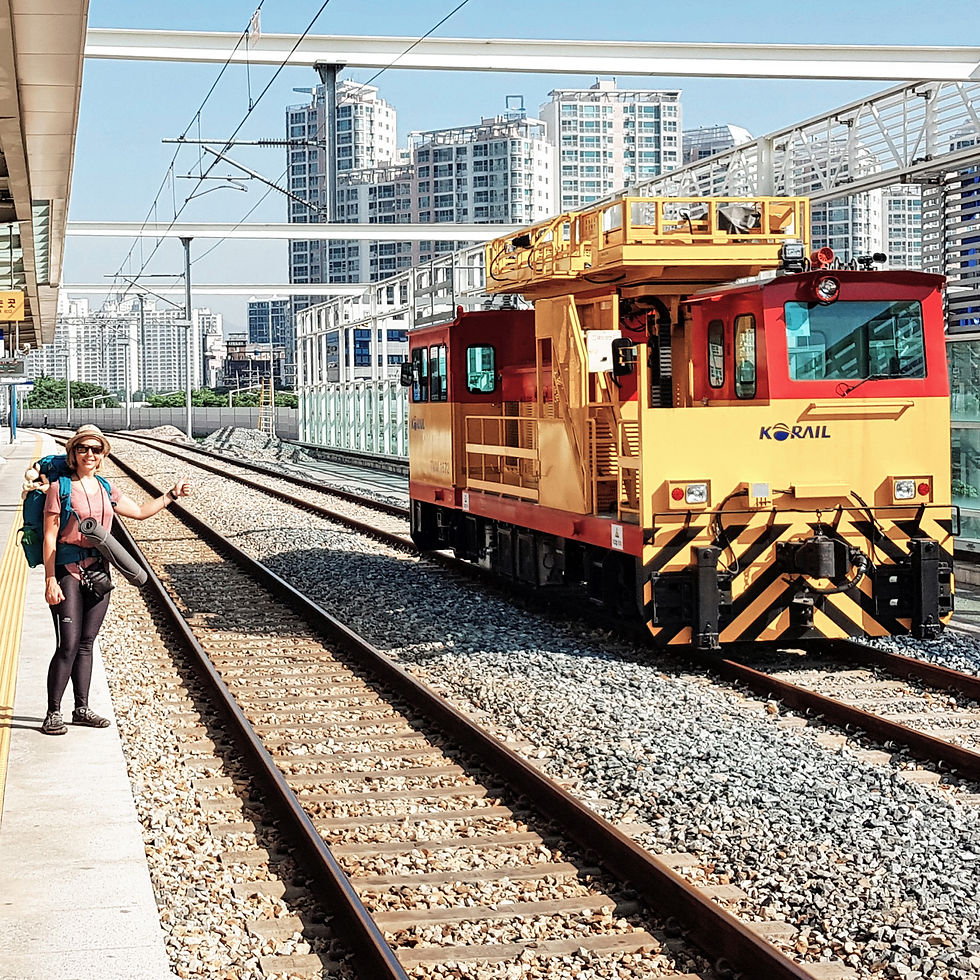Getting Around SOUTH KOREA
- Lisa

- Jun 4, 2019
- 5 min read
Updated: Sep 17, 2020
Google Maps / Naver
If you take a look at Google Maps, you will soon realise that it’s pretty useless when it comes to information (particularly routing) in South Korea. Luckily, there is NAVER Map, Navigation App which is the Google Map equivalent for South Korea. Be sure to download this app and the maps or you will find navigating Korea to be a nightmare! The app works very similarly to Google Maps and is most useful for finding out which bus number you need to take to get around the cities. Do note though, that the bus scheduling information is NOT live and the bus times (particularly in some Cities such as Andong) can be VERY unreliable. The only way to really establish bus times is to look at the bus schedules posted at the actual bus stops – very impractical indeed!
The T-Money transportation card can be purchased from most convenience stores or from some ticket vending machines at some stations. We recommend getting your card from a convenience store and you can easily also ask any convenience store to load your card with further credits at any time. The card then is used for busses, subway and even some taxis. The card also offers a slight discount in comparison with using cash for these modes of transport.
Although this card sounds great in theory, we were not able to find it available for purchase when we arrived in Busan. Perhaps it is easier to find in Seoul?

RAIL TRANSPORT IN SOUTH KOREA
KORAIL, Korea’s railway line is a great way to travel longer distances between cities. We found the railway system to be very clean, efficient and the most economical way to travel between cities. Booking your tickets online is simple and easy and you are able to pay with a foreign credit card. The only hassle is that you do still need to print out your ticket to present the hard copy at the train station when boarding. Alternatively, you can book your tickets at any train station and we found the attendants there to be very friendly and helpful even when their English was limited. A top tip is that if you are travelling in a group some of the coaches seats can be swivelled 180 degrees to create a “booth” for socialising!
SEOUL SUBWAY SYSTEM
Subways are currently available in five major cities including the Seoul Metropolitan Area, Busan, Daegu, Gwangju and Daejeon. The city of Seoul has a very extensive and well-developed subway system which is the quickest and easiest way to get around in and around Seoul.
Busan Metro
Busan's Metro system is clean, efficient and easy to use with destination announcements in Korean, English, Japanese and Chinese. The easiest is to make use of a Tmoney card which can be purchased either at the station vending machines or at most convenience stores. This is also the cheapest way to get to and from Gimhae International airport.
As an alternative to train travel between cities, and when the train doesn’t reach the city you’re headed to, the Express & Intercity Buses are the way to go. This is usually the most direct way to get to where you want to be, but can sometimes also come at a premium price for the added convenience and possibly shorter total travel time. It is important to note that not all stations are both Express and Intercity stations, some are only either one or the other, so be sure to double-check that you are at the correct station! Personally we found the train to be a more comfortable ride in comparison to the bus as you can get up and walk around, but that is just personal preference! We were not able to book bus tickets online as currently only local credit cards are accepted, but you can at least see the schedule and prices.

Local Buses
All cities seem to have a fairly extensive local bus system, although in some cities these are a lot more efficient than in others. In and around Busan, we found the buses to be very regular and a great, cheap and easy way to get around. We used the Naver Map Navigation App to know which bus number to use. The only negative comment we have is that the bus drivers all seem to think that they are rally car drivers resulting in the rides almost always being anything but smooth or relaxing!
Although not all taxi drivers speak English, they are a convenient way to get around, particularly in cities where local busses are less regular. Hailing a taxi on the street is cheaper than calling for one. Fares will vary by region, but taxis all use the same fare calculation. While virtually all taxis operating in the Seoul area accept credit cards or transportation cards, you may need cash for taxis in other areas outside of Seoul. Due to their convenience, taxis are of course considerably more expensive than making use of public transportation.
Renting a car is relatively easy, as there are numerous car rental companies in Korea. The largest car rental services are Lotte Rent-a-Car and AJ Rent-a-Car. In order to rent a car in Korea, you must have a valid International Driving Permit (IDP) or a valid driver's license issued in Korea. Some car rental companies require both the IDP and the local driver's license and the IDP needs to have been issued in the same country as the local driver’s license. We did not rent a car in Korea so do not have any personal experience to add.
Scooter Rental
If you have a valid International Driving Permit (IDP), then you should be able to rent a scooter in Seoul and a few other places around Korea. The daily rental fee is rather high and in most cities, it is easy enough to get around by public transportation, so we never found the need for renting a scooter. On Jeju island, a scooter could be a great way to get around though.

Bicycles
Korea is a very cycle-friendly country, with extensive cycling paths throughout the country, as well as the East Coast route, which starts from the Unification Observatory at the northern tip of South Korea and stretches 720km all along the East Coast to Busan in the South.
For those less serious cyclists, most cities are also very friendly to cycle and bicycles can be rented fairly easily once you manage to overcome the language barrier. There are also a few free public bicycle rental stations across the country, for instance in Busan and Seoul where you can rent a bicycle for free for 2 hours if you present your passport. We did this in Busan and it was very easy and great fun! Seoul also has a paid shared bicycle rental system which you can make use of provided you have a local cell phone number.
As in most countries, Korea has tour bus packages specifically designed for tourists.
These tours are usually provided by students and are a great way to get an overview of Seoul while interacting with locals. One of the better-known providers is SeoulMate.
For private transfers and ground transport have a look at the options available on Viator.




